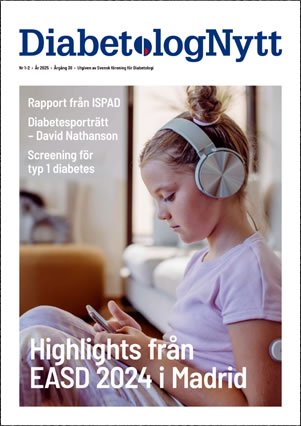Elevated glucose measurements discovered during an emergency hospital admission could predict the risk for developing type 2 diabetes, particularly in people older than 40 years of age, according to research published in PLOS Medicine.
-
The findings could inform patients of long-term risk and target lifestyle advice to those at highest risk, according to the study by David A. McAllister, MD, MBChB, MRCP, MFPH, MSc, of the Centre for Population Health Sciences, University of Edinburgh, United Kingdom, and colleagues.

David A. McAllister
“Our study shows that the 3-year risk of diabetes can be predicted on the basis of age, sex and admission (random) glucose levels obtained during an acute illness,” McAllister told Endocrine Today. “It also shows that most patients without diabetes found to have high blood glucose levels during such acute admissions don’t develop diabetes within 3 years.”
Using data from the Scottish Care Information-Diabetes Collaboration national registry, the researchers retrospectively identified patients aged ≥30 years admitted to a hospital for an acute illness between 2004 and 2008; patients diagnosed before admission, or within 30 days following, were excluded.
Based on glucose level at admission, age and sex, logistic regression models estimated the risk for developing type 2 diabetes within 3 years of discharge. The researchers performed separate analyses for patients aged ≥40 years (n=86,634) and 30 to 39 years (n=18,643).
Overall, the 3-year risk was calculated at 2.3%, ranging from less than 1% for a glucose ≤5 mmol/L to approximately 15% at 15 mmol/L. For patients aged ≥40 years, the risks at 7 mmol/L and 11.1 mmol/L were 2.6% (95% CI, 2.5-2.7) and 9.9% (9.2-10.6), respectively; one in four patients had glucose levels above the former cut-point and one in 40 above the latter. For patients aged 30 to 39 years, the risks at 7 mmol/L and 11.1 mmol/L were 1.0% (95% CI, 0.8-1.3) and 7.8% (95% CI, 5.7-10.7), respectively; one in eight patients had levels above the former cut-point and one in 100 above the latter.
Diabetes risk was associated with age, sex and socio-economic deprivation, but not with other factors including elevated white cell count or co-morbidity. Results were similar for pre-specified sub-groups admitted with myocardial infarction, chronic obstructive pulmonary disease and stroke.
There were 25,193 deaths over 297,122 person-years (85.8 per 1,000 person-years); 2,406 (8.1 per 1,000 person-years) of these were attributed to vascular disease. Patients with glucose levels between 11.1 to 15 mmol/L and >15 mmol/L had higher mortality than those with glucose <6.1 mmol/L (HR=1.54; 95% CI, 1.42-1.68 and 2.50; 2.14-2.95, respectively), with adjustments for age and sex.
“Clinicians can reassure even patients with moderately raised glucose found during an acute admission that they are unlikely to develop diabetes within 3 years,” McAllister said. “For countries similar to the UK in terms of type 2 diabetes risk, the Glucose on Unselected Admissions and Risk of Diabetes (GUARD) calculator can be used to estimate the 3-year risk of type 2 diabetes, and clinicians can use this information to provide lifestyle advice and arrange appropriate follow-up.” — by Allegra Tiver
For More Information:
GUARD calculator – www.cphs.mvm.ed.ac.uk/diabetes-risk
Disclosures: This work was supported by a research grant from the Chief Scientist Office for Scotland. One researcher was funded by an Intermediate Fellowship from the British Heart Foundation.
From www.healio.com/
Nyhetsinfo
ww red DiabetologNytt





